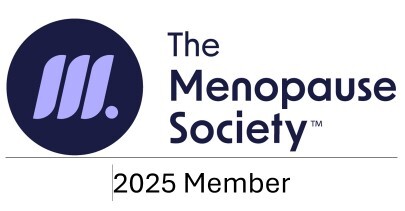(Especially if you want to lose fat — not muscle)
Let’s talk protein. Yep — the kind in your eggs, Greek yogurt, chicken breast, or smoothie scoop. If you’re taking GLP-1 medications, protein isn’t optional — it’s essential. Here’s why your body loves protein (especially right now), how much you actually need, and how to make sure you’re getting enough.
First, a Quick GLP-1 Recap
GLP-1 medications work by slowing digestion, stabilizing blood sugar, and reducing appetite. Sounds great, right? It is! But less appetite often means… eating less of everything — including protein.
And when your body isn’t getting enough protein, it doesn’t just burn fat. It may start breaking down lean muscle — which is exactly what we do not want.
Why You Need Protein on GLP-1 Medications
1. Preserve Lean Muscle
Muscle keeps your metabolism humming. Without enough protein, your body might dip into your muscle reserves for energy — which can slow down your metabolic rate over time. We want you to lose fat, not muscle.
2. Improve Body Composition
Even if the scale says you’re dropping pounds, what really matters is what you’re made of. Prioritizing protein helps you build or maintain lean muscle mass, which gives you that toned, strong look — and supports long-term weight maintenance.
3. Keep You Feeling Full
Protein digests more slowly than carbs, so it helps you feel satisfied longer. This is key when you’re eating smaller portions on GLP-1s. Less hunger = better choices = better results.
4. Support Mood and Hormones
Protein is packed with amino acids — the building blocks of neurotransmitters like serotonin and dopamine. Getting enough can help keep your mood stable and your brain clear as your body adjusts to weight loss.
5. Preserve Skin and Hair Quality
Protein fuels collagen production, tissue repair, and healthy hair growth. Without enough, people on GLP-1s may notice thinning hair, dull skin, or slower healing. Upping your protein helps you glow from the inside out — even during fat loss.
So… How Much Protein Do You Actually Need?
Here’s the simple rule of thumb:
Aim for 1 gram of protein per pound of goal body weight per day.
Example: If your goal weight is 150 lbs, aim for 130–150 grams of protein daily.
If you’re not used to tracking protein, that might sound like a lot — but don’t panic. With a few tweaks, it becomes easy:
-
Greek yogurt or cottage cheese at breakfast
-
Add a scoop of protein powder to your smoothie or coffee
-
Choose lean meats, tofu, or tempeh for lunch and dinner
-
Snack on hard-boiled eggs, turkey slices, or protein bars
-
Mix collagen peptides into oatmeal or matcha
It does take a little extra planning to add in these proteins (especially when you’re not that hungry), but it’s so important.
A Note on Supplements
If you’re struggling to get enough protein from food alone (very common on GLP-1s!), a high-quality protein powder can make all the difference.
Our favorites?
-
Thorne Whey Protein Isolate
-
Designs for Health Whole Body Collagen (good for joints, skin, and a protein boost!)
-
So Lean & So Clean, Plant Protein
Ask your provider for personalized recs — or check out our favorites on Fullscript for 10% off.
At Flow Wellness, We Support the Whole You
We’re not just handing out prescriptions and sending you on your way. If you’re on a GLP-one medication with us in Bend or Seattle, you’ll get:
✔ Protein & supplement recommendations
✔ Check-ins to protect your muscle and metabolism
✔ Optional labs to track progress
✔ Real humans (hi!) helping you thrive
We want you to feel strong, look vibrant, and stay energized every step of the way.
TL;DR: Don’t Skip the Protein
GLP-1s help you eat less — but protein is what helps you lose weight well. It’s the secret sauce to staying strong, preserving muscle, and feeling full. Your body will thank you.
Disclaimer: This blog post is for informational purposes only and should not be considered medical advice. Always consult with a healthcare provider for personalized medical advice.




